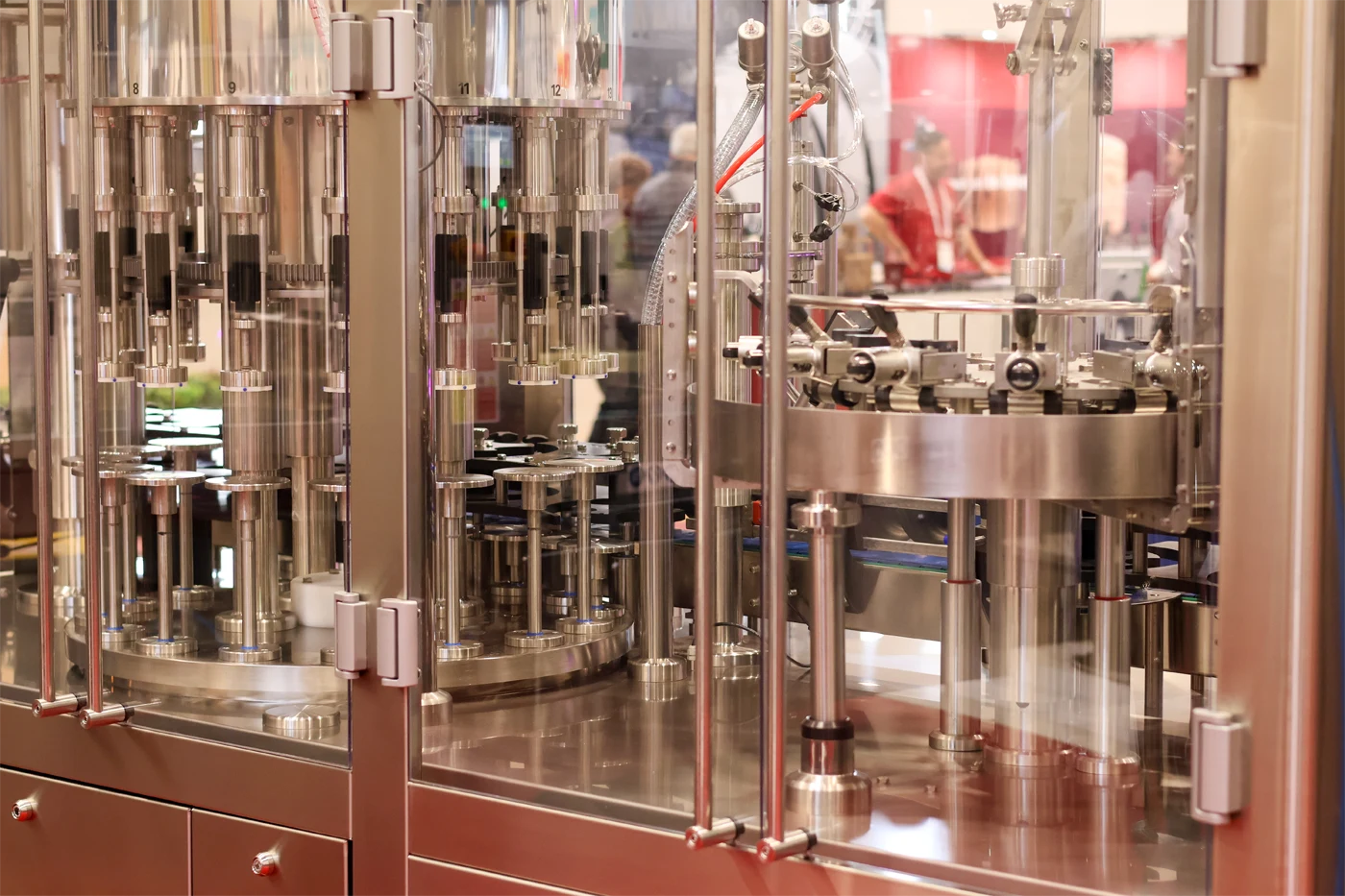
Gravity Fillers
How they work: Gravity fillers are the most straightforward filling method. A product tank is held directly above the filling nozzles, and the liquid flows from the tank into the bottles or containers using the force of gravity. The filling valve simply opens to a pre-set level or for a set time to control the fill height and to ensure no product is wasted.
What are they best for: Still liquids such as wine, spirits, still water, thin juices, olive oils and thin sauces.
Why would you use them?: Gravity fillers are the workhorses of the wine and spirits industry for a reason. They are simple, reliable, cost-effective and very easy to clean and maintain. Because the filling process is gentle, these units provide an excellent choice for non-viscous products where foaming isn't a major concern.
Key takeaway: Gravity fillers are the simplest, most cost-effective choice for still, free-flowing liquids.
Click here to check out our range of gravity fillers.
Isobaric Fillers
How they work: Isobaric fillers are a more complex system, are are essential for any carbonated beverage. The machine first flushes the bottle with CO2 and pressurises it to match the pressure inside the fillers product tank, and only then does the filling valve open. Because the pressure is equalised, the carbonated liquid can flow into the bottle or can gently without "exploding" into foam or losing its dissolved CO2.
What are they best for: Any carbonated beverage such as beer, cider, sparkling wines, RTD's and carbonated water.
Why would you use them?: Isobaric fillers are the only correct way to bottle or can a carbonated product at scale. Attempting to use a standard gravity filler would result in a massive foam-over and a flat, ruined product. Isobaric fillers are the industry standard for protecting the carbonation and quality you worked hard to create.
Key takeaway: Isobaric fillers are the essential choice for any carbonated product to prevent foaming and keep the fizz.
Click here to check out our isobaric canning lines and bottle fillers.
Vacuum Fillers
How they work: Instead of pushing liquid in, a vacuum filler creates a seal on the bottle and then uses a vacuum to suck the air out. This vacuum pressure then draws the liquid from the product tank into the bottle. Its unique advantage is that the fill stops only when the liquid reaches a pre-set, physical level in the bottles neck, ensuring a perfect fill every time.
What are they best for: Products in glass bottles where a consistent visual fill level is critical, such as premium spirits, wine or high end oils. They are also suitable for slightly viscous products like syrups or liqueurs.
Why would you use them?: Our vacuum fillers are a perfect choice for small scale bottling, where a premium, consistent fill level is required. Vacuum fillers are very easy to use and ensures every bottle on the shelf looks identical.
Key takeaway: Our recommended choice for small scale bottling, or where a perfectly consistent visual fill level is required.
Click here to view our range of vacuum fillers.
Volumetric or Piston Fillers
How they work: This technology is completely different from the others. A piston filler doesn't care about fill level, it cares about volume. A piston inside a cylinder draws a precise, pre-set volume of product from a hopper which the machine then dispenses into a container.
What are they best for: Thick, viscous or semi-solid products that are sold by a precise "net weight" or" volume" such as sauces, jams, honey, yoghurts, creams, lotions and products with small particulates.
Why would you use them?: Our vacuum fillers are a perfect choice for small scale bottling, where a premium, consistent fill level is required. Vacuum fillers are very easy to use and ensures every bottle on the shelf looks identical.
Key takeaway: The only choice for thick, viscous products. It provides the highest level of fill accuracy by volume.
Click here to view our range of volumetric fillers.
Which is right for you?
The best filler isn't necessarily always the most expensive one, but rather the one that matches your product.
- If you have a still product, a Gravity Filler will likely be your best option.
- If you have a carbonated product, you will require an Isobaric Filler.
- If your product is thick and viscous or requires a specific weight/volume, a Piston Filler will be your best choice.
- For small scale operators of still products or if presentation is key, a Vacuum Filler is something you might consider.
Choosing the right technology is the foundation of an efficient and high quality production line. If you're still unsure, our team is here to help. Contact us today and we can analyse your product and recommend the perfect filling system for you.



